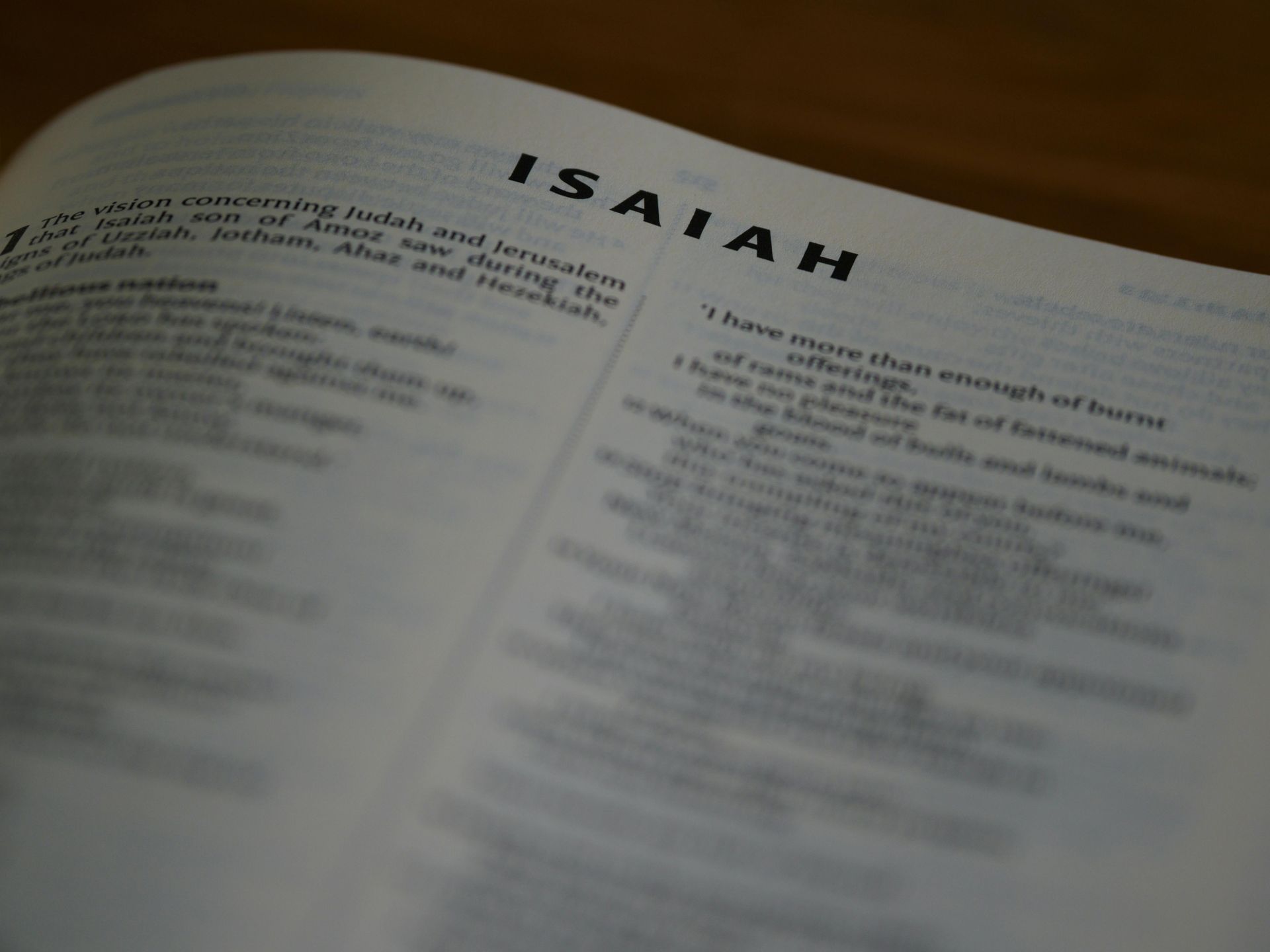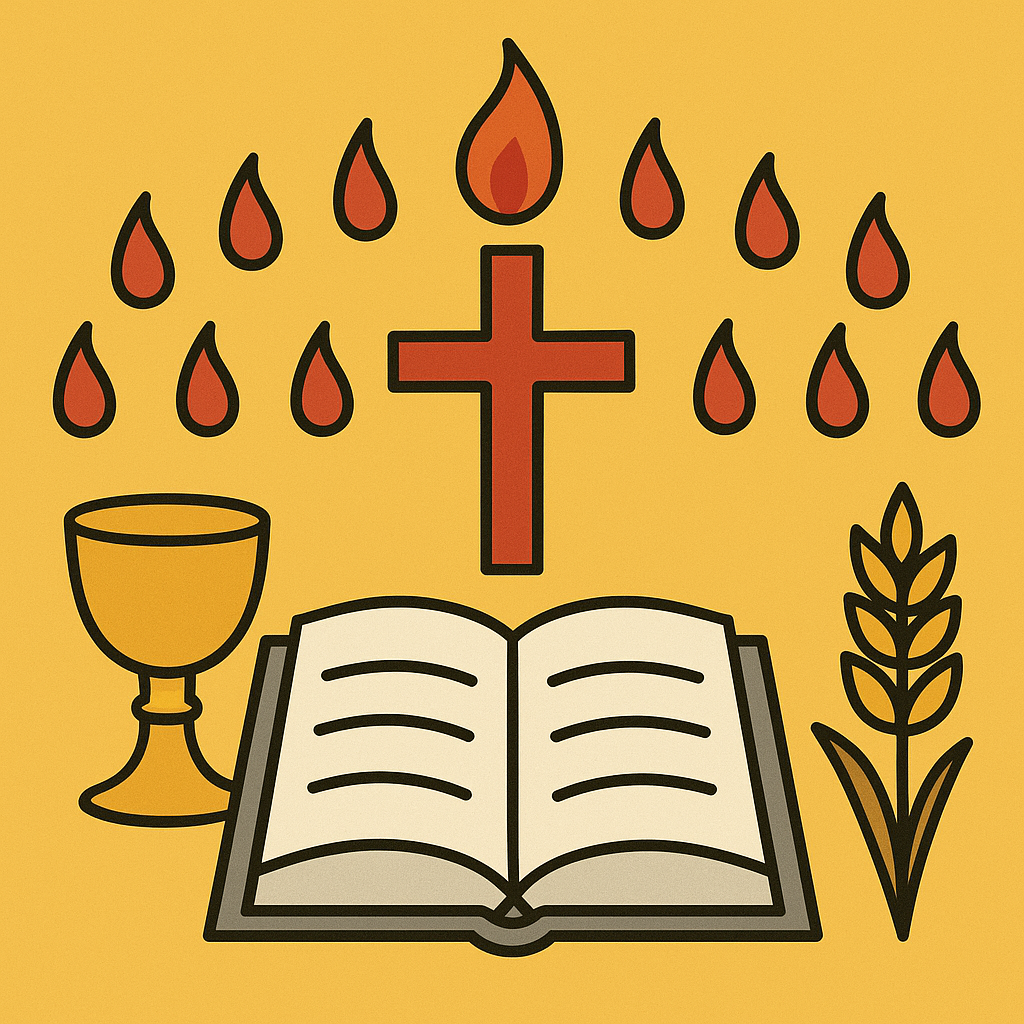Ezekiel
EZEKIEL
A PRIEST-PROPHET WHO MINISTERS TO THOSE IN EXILE
Ezekiel, a contemporary of Jeremiah, was among the exiles taken from Jerusalem to Babylon in the second wave. Daniel was taken in the first wave eight years earlier. Habakkuk may have still been alive. Habakkuk was the prophet who asked God, "Why do you allow such evil in this country?" God told him that he would send in the Babylonians to punish them. And so here is the fulfillment of that prophecy. Jeremiah was also still alive and preaching in Jerusalem.
Ezekiel, along with the others, was able to live freely in Babylon. He was married, but his wife died in the ninth year of their captivity. In this book he speaks of the coming fall of Jerusalem, and then he addresses the future of foreign nations and then ends with prophecies of Israel's future restoration.
Eze 2:7 “You must speak my words to them, whether they listen or fail to listen, for they are rebellious.”
His mission was to preach. He was not responsible for the results. Likewise, evangelists and preachers should not feel like failures if people don’t heed their messages.
Eze 4:1-5, 17, Ezekiel portrays the future of Jerusalem in a series of symbolic acts. Does this sound familiar? Jeremiah did the same thing. In one symbolic act he shaves his head and beard. He then divided the clippings up into thirds to symbolize that a third of the people will die by the sword, a third will die by famine and a third will be scattered.
Eze 5:7 “You have not even conformed to the standards of the nations around you.”
God’s people appeared to have an even lower standard of behavior than other nations. Imagine your community being distressed to see that a new church is being built in town. The church can be thought to be a corrupting influence in the community if the ethical practices of the church members don’t even meet the standards of the locals. Rom 12:2 says, “Do not conform any longer to the pattern of this world, but be transformed by the renewing of your mind.” How do we renew our minds, the way we think? You’re doing it right now, by reading and studying Scripture.
Eze 8:14, 16, “I saw women sitting there, mourning for Tammuz . . . He brought me into the inner court of the house of the Lord . . . they were bowing down to the sun in the east.”
Not only were they worshipping other gods, they were actually worshipping pagan gods in the Holy Temple of God. In chapter nine we see the idolaters killed.
Eze 10:4 “Then the glory of the Lord rose from above the cherubim and moved to the threshold of the temple.”
In Isaiah 50:1 we see God giving Israel a Certificate of Divorce. Now we see the Glory of God departing the Temple. This is sort of like a husband divorcing his unfaithful wife then packing a suitcase and walking out. This is the Shekinah, the physical manifestation of the presence of God. This is what led Moses through the desert (Ex 13:21-22) and resided in the temple starting in 2 Chron 7:1-3. It is also found in the New Testament. I might suggest that you go to the Question and Answer section and read "What was the star of Bethlehem Star?"
Eze 12:3, “Therefore, son of man, pack your belongings for exile and in the daytime, as they watch, set out and go from where you are to another place.”
Here is another symbolic act. Imagine him carrying around a suitcase and people asking, “Hey Ezekiel, where are you going?” He might respond by saying, “To Babylon, where you are going, too.” He must have been looked upon as the local “character”, the guy who was a little bit crazy.
Eze 13:10, “Because they lead my people astray, saying, ‘Peace,’ when there is no peace, and because when a flimsy wall is built, they cover it with whitewash, therefore tell those who cover it with whitewash that it is going to fall.”
Does the term “white washed tombs” sound familiar? In Matt 23:27 Jesus used the same term. “Woe to you, teachers of the law and Pharisees, you hypocrites! You are like whitewashed tombs, which look beautiful on the outside but on the inside is full of dead men’s bones and everything unclean.” Are there churches that look great on the outside but are godless on the inside? In Revelation 3:17 we find the Laodicean church describing itself as rich and in need of nothing. They appeared to have been blessed by God. Yet Jesus describes them as wretched, pitiful, poor, blind and naked. And where is Jesus? Not in the church, but standing on the outside knocking to get in. A beautiful church building is no guarantee that there are beautiful people inside.
Eze 16, in this chapter there is an allegory of unfaithful Jerusalem. God is described as giving her fine jewelry, which she used to prostitute herself to others. Here again we see the misuse of jewelry, but not a condemnation of wearing jewelry as some groups claim. It is her unfaithfulness that is condemned, not the wearing of jewelry.
Eze 21:3, “I am against you. I will draw my sword from its scabbard and cut off from you both the righteous and the wicked.” In these chapters, much as Amos, Isaiah and Jeremiah did, Ezekiel brings messages of judgment against other nations. “I am against you” is not something you want to hear from anyone, let along God. I wonder how many slept well after hearing this message.
Eze 28: For years I was of the understanding that this chapter dealt with the rebellion of Lucifer and other angels who became Satan and his demons. This comes from verses 12-13 which describes this person as a model of perfection, full of wisdom, perfect I beauty. You were in Eden. V 15, you were blameless in your ways. V 17 Your heart became proud because of your beauty, so I threw you to the earth. But, now I am not so sure.
Let’s take a look at the context. From chapter 26 on it speaks of the literal King of Tyre, not a spirit being. Verse 2 says, “I am a god.” Don’t we use the germ “god” in a figurative sense? Verse 5, “Because of your wealth you heart has grown proud.” This is not uncommon among those who are very rich and powerful. Verse 12, “You were the model of perfection, full of wisdom and perfect in beauty. You were in Eden-the Garden of God.” This could mean nothing more than that the King of Tyre was a very good king. “Full of wisdom and beauty” literally is “the one sealing a plan.” The king sealed plans with wax and the imprint of his office.
The term Garden of Eden can also be uses figuratively. In Eze 31:8-9 the Garden of Eden refers to a beautiful place that is “fit for a king.” Ancient temples had a garden around them. This “Eden” could be a garden of a god called Melkart. Verse 14 says, “You were anointed as a guardian cherub, for so I ordained you.” Rom 13 says that rulers are in power with His permission. A “guardian cherub” could mean an anointed protector who defends his people. Verse 16 speaks of trade filled with violence. This suggests a literal king. Verse 17 says that God threw him to the earth in the sight of everyone. This could mean that he removed him from his throne. I suggests that this passage deals with the King of Tyre, much as Isa 14 probably deals with the King of Babylon, rather than Satan.
Eze 33:31, “My people come to you, as they usually do, and sit before you to listen to your words, but they do not put them into practice. With their mouths they express devotion, but their hearts are greedy for unjust gain.”
This might sound like some church goers today.
Eze 37, This chapter refers to the “Valley of Dry Bones.” Here we are shown a valley filled with dry bones. The bones are brought together, flesh put into them and they come to life. This is a prophecy that the exiles will return, the nation will be reunited. Later, in verses 24-27, Ezekiel is told that “My servant David will be king over them and they will all have one shepherd . . . David my servant will be their prince forever . . . my dwelling place will be with them; I will be their God. This appears to refer to the ultimate goal of Jesus ruling over them during the millennium. It is clear that this chapters deals with the reunification of the nation of Israel. But, others have a different view. The Church of Jesus Christ of Latter Day Saints, (the Mormons) has used verses 16 and 17, the two sticks, to refer to the Book of Mormon (the stick of Ephraim) and the Bible (the stick of Judah). I would ask a Mormon this question: “What rule of interpretation did you use to come up with that idea?”
Eze 38, Prophecy teachers have been studying and speculating about this chapter for generations. Here we see an alliance of northern nations invading Israel. They are destroyed by earthquakes, war, pestilence, blood, flood, hailstones, fire and brimstone. This leads to a revival in Israel as Jews turn to the Lord. It takes seven years to clean up the military debris. This seems to occur before the Great Tribulation.
Before I go any further let me say a couple of things. When I was in the cult, there was great emphasis placed on the year 1975. This was a year that was widely speculated to be the beginning of the Tribulation. Jesus did not know when He would return, so how could we think that we know? We are wasting our time and getting distracted by silly speculation. Rather than focusing on WHEN Jesus will return, I suggest we focus on WHAT we should be doing in light of His return. I suggest that you read in the Question and Answer section, "How should we live in light of the imminent return of Jesus?" and "Is it the end of the world - - again?"
A second point that I want to make is concerning the study of prophecy. I think that the first book that I read on prophecy was the best seller by Hal Lindsey entitled: The Late Great Planet Earth. Since then I’ve read dozens of books on the subject. Let me recommend two books, a website and another author. If I could only keep two books on prophecy, they would be: Things to come, A Study in Biblical Eschatology by J. Dwight Pentecost and The Footsteps of the Messiah, A Study of the Sequence of Prophetic Events by Dr. Arnold G. Fruchtenbaum. If you read one or both of these, you will never have to read another book on prophecy. These books are comprehensive and easy to read. There is also a website that I like, www.lamblion.com, the website for Lamb and Lion Ministries. Dr. David Reagan is the head of this ministry and was my instructor on prophecy in seminary. Another author who I recommend is Dr. John F. Walvoord, long-time president of Dallas Theological Seminary and the author of dozens of books on prophecy and other subjects.
Eze 40-48; Here God shows Ezekiel a vision of the future Millennial Temple, the Glory of God returning to this new temple and the division of the land during the Millennium.
When I get onto Jewish websites, I find that there are many traditions concerning some of these Biblical characters. One tradition is that both Jeremiah and Ezekiel were descendants of Joshua. Another tradition is that Ezekiel was a son of Jeremiah.
There is a tomb in southern Iraq, near the town of Kefil, that is believed to be the tomb of Ezekiel.
Recent Articles
Share this:
Start Here...
Why Study the Bible?
Don’t many consider the Bible to be just a book of myths? Why do we read the Bible rather than the sacred literature of other religions?
How do we know that it is from God? How do we know that what we have today is an accurate translation from the original? Is the Bible complete or have there been some books that have been lost?
We should be able to answer these questions, and there are answers! So start here!
Answers to Common Bible Questions





